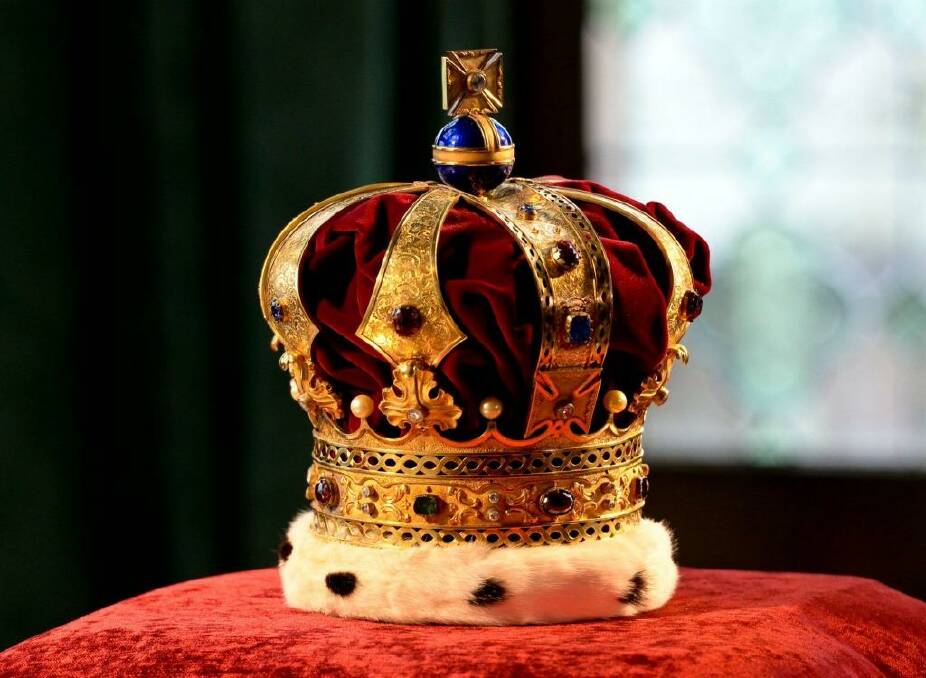
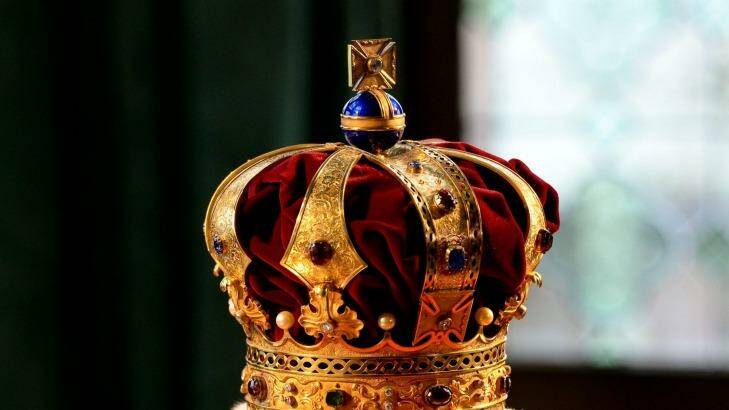
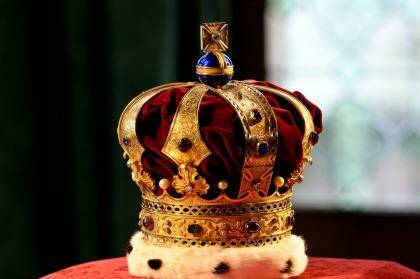
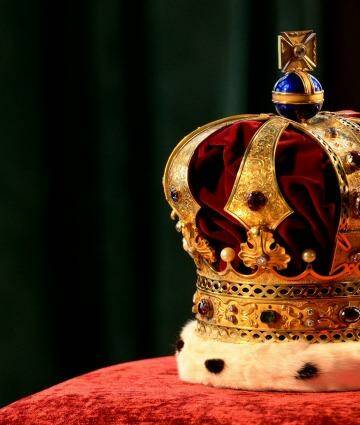
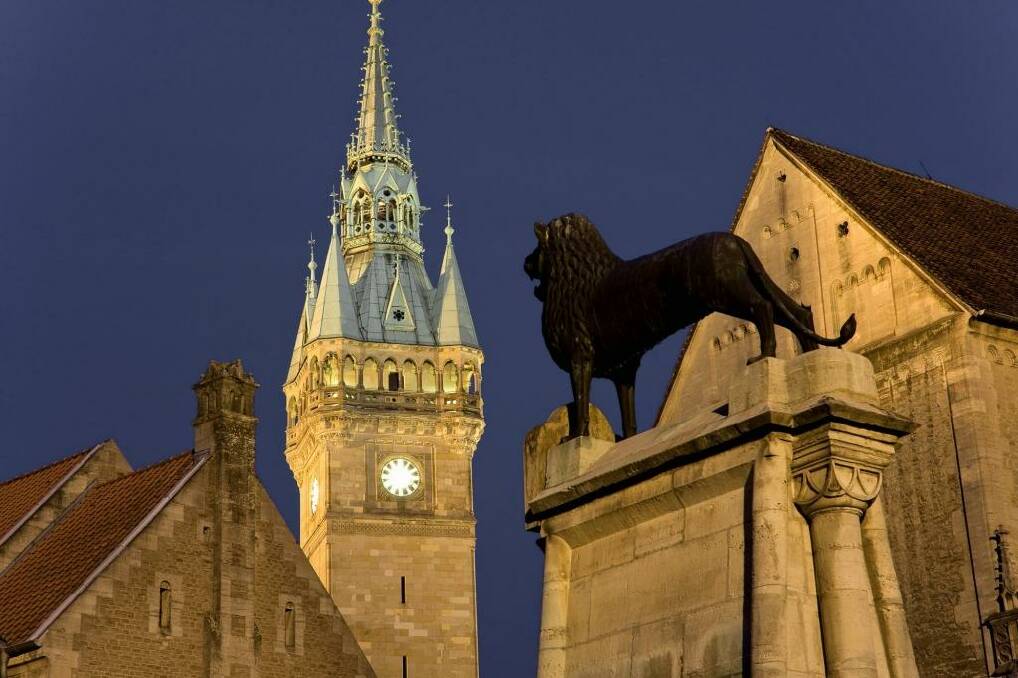




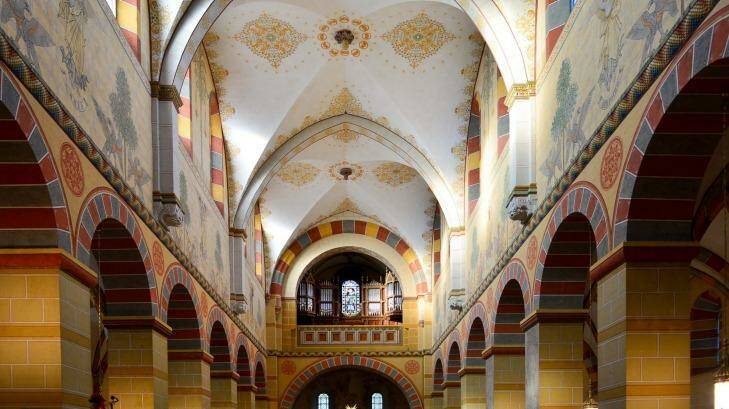





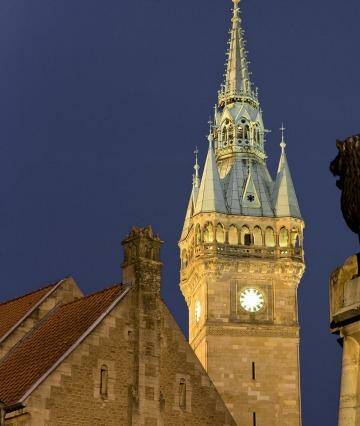
In the world of Westeros, every royal house has a motto. House Stark maintains that "Winter is coming". House Greyjoy declares, "We do not sow". If the real-life House Welf had a motto, it should have been, "We rule". For 900 years, the Welfs, based in northern Germany, were masters of the game of thrones. Not only did they churn out rulers for their own territories; thanks to a cleverly spun web of alliances, Welfs ended up ruling countries across Europe. England's first three King Georges and Russia's short-lived tsar, Ivan VI, were part of the clan, along with Holy Roman Emperor Otto IV and countless lesser princes, dukes and margraves.
Subscribe now for unlimited access.
$0/
(min cost $0)
or signup to continue reading
Based first in the city of Braunschweig, then in nearby Hanover, the Welfs – or Guelphs, as they are often rendered in English – have been overshadowed in the history books by later dynasties such as the Prussian Hohenzollerns. Yet their impact should not be underestimated. The Welfs' centuries-long rivalry with the Ghibellines shaped European history, launching wars across the continent.
Even today, the Welfs are still counting crowns. Frederica of Hanover was Queen of Greece until her death in 1981; her son Constantine sits on the Greek throne. Her daughter, Sofia, was for decades the Spanish queen; now Sofia's son Felipe sits on the throne.
The current head of House Welf, Ernst August of Hanover, has a lower profile. His most notable achievement to date has been marrying, then divorcing, Caroline of Monaco. The dynasty's glory days may be past, but the Welfs have left a mighty legacy. A trip to the Welf heartland in Lower Saxony is a journey rich in glory and grandeur. Here is our guide to the area's don't-miss destinations, and the tales of intrigue behind them.
Braunschweig – The lion city
Power player: Henry the Lion
Eight centuries after his death, Henry the Lion remains one of the most colourful characters in German history. This powerful prince conquered vast swaths of territory and founded many of Germany's most important cities, including Munich, Lubeck and his royal capital, Braunschweig.
The fierce warrior's relationship with his overlord, the Emperor Frederick Barbarossa, was volatile. The Lion alternated between being Barbarossa's most able lieutenant – being rewarded with even more land in the process – and his fiercest enemy. Along the way, he was exiled not once but twice. And that's before we come to the story of how he once killed a dragon while on crusade.
Henry's capital city, Braunschweig, is centred around the impressive Burgplatz, or Castle Place. The open square is flanked on all sides by ancient buildings; each of the benches that lines its sides is supported by a pair of stone lions, each with its own personality. The mightiest lion of all towers above the centre of the square: a 12th-century bronze commissioned by Henry that is considered to be the first monumental sculpture of the Middle Ages. Actually, this is a replica –the 800-kilogram original, once covered in gold plate, is on display just a few metres away, inside Dankwarderode Castle.
The most impressive building on the square is the imposing cathedral, which houses more artistic treasures. In particular, the finely detailed sculptures on the tomb of the Lion and his English wife Matilda, sister of Richard the Lionheart, are medieval masterpieces.
Braunschweig remained the Welf capital for centuries, and its rich history can be read in the ornate buildings that line its streets, from medieval and renaissance to art nouveau. Particularly eye-catching are the richly decorated 16th-century Gewandhaus, or House of the Cloth Merchants, and a more recent addition, the pop art Rizzi Haus.
Other highlights include the pretty Magniviertel, its small alleys and half-timbered houses filled with trendy bars and restaurants, and the moat which still rings the city. Depending on your energy levels, you can cruise the moat by boat, or power along in a kayak.
One more thing: One of Henry's successors, the 18th-century Duke Anton Ulrich, was the first ruler to put his art collection on permanent public display, a move which inspired the birth of the modern museum. Known today as the Herzog Anton Ulrich Museum, the collection includes works by Rubens, Rembrandt and Vermeer.
Konigslutter: The sacred site
Power player: Emperor Lothar III
Stretching over 8000 hectares, north Germany's largest beech forest, the Elm, is straight out of a Grimm Brothers' fairytale. Its sun-dappled glens offer opportunities to pick mushrooms and spot golden pheasants. Equally, however, its dark copses can harbour dangers such as wild boars. Small towns and villages cluster around its edges, perhaps none as intriguing as the town of Konigslutter.
With just 16,000 inhabitants, Konigslutter is a sleepy place. It is therefore surprising to find, on a leafy hill above the town, an imposing imperial cathedral. The cathedral is the final resting place of Lothar III, Holy Roman Emperor and grandfather of Henry the Lion.
This mighty structure was the first great Romanesque cathedral to be built in Germany. Its foundation stone was laid in 1135, after the Emperor took a trip to Rome, during which he had been impressed by the cathedrals he saw in Lombardy. He coaxed a couple of master Italian craftsmen to accompany him back to Germany, and set them to work creating a cathedral unlike anything anyone had seen before.
There is much to explore both inside the cathedral and out. The elaborate carvings, which range from the imposing Lions Portal to the playful hunt frieze, in which two cheeky rabbits tie up a hunter, are exquisite. Equally enchanting is the echo cleverly planned with a nine-second delay, to showcase the chanting of the Benedictine monks.
The interior decoration – largely from the 19th century – is less impressive, but for one remarkable feature tucked away corner at the back of the church. The colourful friezes on the back and side walls, which should meet in the corner, miss each other by 14 centimetres. It is a deliberate error, following the Islamic idea that every work of art should have a flaw, since only Allah is perfect. How did 11th-century Lombard craftsmen come across the idea? Perhaps the concept had filtered back from the Middle East after the First Crusade; perhaps it travelled up from Sicily, which had recently been under Arab rule. Either way, it is a fascinating feature to find in a medieval German church.
One more thing: Konigslutter was once home to 80 breweries, thanks to its remarkable freshwater spring which poured out 20,000 litres a day. The breweries have disappeared but the unique beer they once produced, Duckstein, was recently revived by Carlsberg, and is fermented in beechwood casks, just as the original was.
Wolfenbuttel: : The showpiece
Power player: Julius of Brunswick-Luneburg
Their wars took them as far afield as Sicily and the Middle East but, like many powerful people, the Welfs often had trouble on the home front. As the rich merchants of Braunschweig became more powerful, they began to chafe under ducal rule, repeatedly challenging their overlords. Fed up with their stroppy subjects, the 15th-century dukes took the radical step of moving their capital to the nearby city of Wolfenbuttel, which would remain their power base for the next 120 years.
It took a lot of money to bring Wolfenbuttel up to Welf standards. The new capital was the first German Renaissance city built on a plan, and Wolfenbuttel today retains more than 600 of the picturesque half-timbered houses typical of the area. Some are grand and spacious; in the Krambuden area, by contrast, small houses huddle next to each other on narrow streets set at sharp angles. This was urban planning with military intent: the aim was to help protect the castle from invaders, corners being easier to defend than wide thoroughfares.
One of Wolfenbuttel's canniest rulers was Julius of Brunswick-Luneburg. The youngest son of Duke Henry V was originally destined for a career in the church, but was the last heir left standing after his two older brothers were killed in a single battle. His father, unimpressed by the talents of his remaining son, tried various stratagems to prevent him assuming the title, but Julius eventually succeeded his father as duke in 1568, aged 40.
Despite being a late bloomer, Julius proved to be an effective, forward-thinking ruler. He introduced fairer taxes and a city militia, reformed the court system, promoted trade and built a mining industry, investing heavily in infrastructure to help bring his exports to market.
Julius' most lasting legacy, however, is the royal library, which he founded in 1572. Thanks to successors who shared his passion, by the 17th century the Biblioteca Augusta was the largest library north of the Alps. Today bibliophiles from around the world are drawn to its outstanding collection, including 512,000 manuscripts and 5000 historic maps. Highlights include original editions of Charlemagne's laws, a 14th-century illustrated Bible designed to teach the illiterate, and a first edition of Martin Luther's revolutionary translation of the Bible into German.
One more thing: When the Welfs moved to Wolfenbuttel, they faced a housing crisis. The town's existing castle was an unimpressive residence, but the family funds did not stretch to a renovation. Their solution? They clothed the castle with a fancy baroque exterior made of wood, which can still be seen today.
Hildesheim: The rival
Power player: Saint Gotthard
Although the Welfs held sway over much of Lower Saxony, a few cities held out against them. Among the most notable is the city of Hildesheim, founded in 815 by Charlemagne's son, Louis the Pious. According to legend, Louis was hunting when he found a valuable reliquary amid the blossoms of a rose bush, and ordered a church built on the spot. The town sprang up around the cathedral; locals say that rose bush still blooms in the cathedral garden.
For centuries the city was ruled by a series of prince-bishops, under the protection of the Holy Roman Emperor. (Insecure emperors often appointed prince-bishops as their lieutenants: as the churchmen could not marry, there was no risk of them founding a rival dynasty.) One of the city's rulers, Gotthard of Hildesheim, even went on to become a saint. He ruled the city for 15 years in the 11th century, instigating a construction frenzy in which more than 30 churches were erected.
One church that predates Gotthard's building spree is the city's cathedral, which is celebrating its 1200-year anniversary this year. The cathedral – which boasts treasures including a pair of magnificent bronze doors featuring scenes from Genesis – has a World Heritage listing, awarded for its outstanding Romanesque architecture.
The fact that this ancient building still stands is particularly remarkable given that much of Hildesheim was obliterated in the closing months of World War II. Three square kilometres of the city centre were destroyed in a single bombing raid. After the war, the city's leaders decided to focus on the urgent need for housing, constructing modern buildings instead of resurrecting historic buildings.
By the 1980s, however, the local mood had changed, and a massive rebuilding program was launched to recreate the city centre. A casual visitor would never guess that ornate medieval buildings like the Tempelhaus and the Knochenhaueramtshaus, richly decorated to show off the wealth of their owners, are just three decades old. They were rebuilt using authentic techniques: craftsmen even made wooden nails in the medieval manner.
One more thing: The cathedral shares its World Heritage listing with the nearby St Michael's Church, notable for its magnificent painted wooden ceiling. Started in 1209, and using colours derived from snails as well as lapis lazuli from Afghanistan, it was painted by monks who spent four years on their backs completing the masterpiece. The church, destroyed in the bombing, is a rebuild; however, the ceiling, which had been removed for safekeeping, is original.
More Lower Saxony sights
Hanover – The baroque Herrenhausen Gardens and the Maschsee Lake in the centre of town are among the highlights of this bustling city.
Goslar – With a 1000-year-old Imperial Palace and a medieval Old Town, Goslar is one of Lower Saxony's biggest tourist attractions.
Luneburg – Atmospheric streets like Auf dem Meere and Am Sande are filled with gabled houses and cobblestones. Beer lovers will enjoy the brewery museum.
Hameln – The home of the Pied Piper is also known for its picturesque Weser Renaissance buildings.
Wolfsburg – The Volkswagen factory is more than the city's main employer; it has also become a tourist attraction for revheads.
Feasts fit for a king
Sightseeing is hungry business; if you have worked up an appetite, try one of Lower Saxony's acclaimed eateries.
La Vie, Osnabruck
Three-Michelin-star chef Thomas Buhner grows much of his own produce in the vegetable gardens at the nearby Ippenburg Palace. His seven-course tasting menu features one inventive course after another, teaming flavours such as smoked plum with pork crackling.
restaurant-lavie.de
Aqua, Wolfsburg
The only German chef in the San Pellegrino World's 50 Best Restaurants list, Sven Elverfeld has managed to garner three Michelin stars despite an unprepossessing setting in Volkswagen's Autostadt attraction. www.restaurant-aqua.com
Endtenfang, Celle
Housed in a baroque manor, Endtenfang (the name means "duck trap") has held its Michelin star for 25 years. The three-course duck menu remains a favourite with passionate poultry fans, showcasing dishes such as crispy duck breast with fig vinegar jus. www.fuerstenhof-celle.com
Das Alte Haus, Braunschweig
Braunschweig's best restaurant looks further afield than most, drawing inspiration from around the world. Typical dishes include a curry lemongrass soup with bok choy and lotus root, and miso-grilled ocean trout with yuzu and coconut foam. www.altehaus.de
Der Allerkrug, Celle
The pretty half-timbered building is totally traditional, but the menu takes a more contemporary approach. Seafood is a specialty: try the lobster ravioli or the scallops served with ox cheek cannelloni and a truffle biscuit. www.allerkrug.de
TRIP NOTES
More information
Getting there
Emirates Airlines operates daily flights from Adelaide, Brisbane, Melbourne, Perth and Sydney to Dubai, with onward connections to Hamburg. Phone 1300 303 777 or via www.emirates.com/au
Getting around
Rail Europe offers a wide range of rail passes and tickets for use in Germany and beyond. See www.raileurope.com.au
Staying there
The Steigenberger Parkhotel has a tranquil setting in one of Braunschweig's picturesque parks. Rooms cost from $160 a night. See www.en.steigenberger.com
The Novotel Hildesheim is in a historic building in the city centre. Rooms from $180 a night. See www.novotel.com.
The writer travelled courtesy of Emirates Airlines, the German National Tourist Office and Rail Europe.

